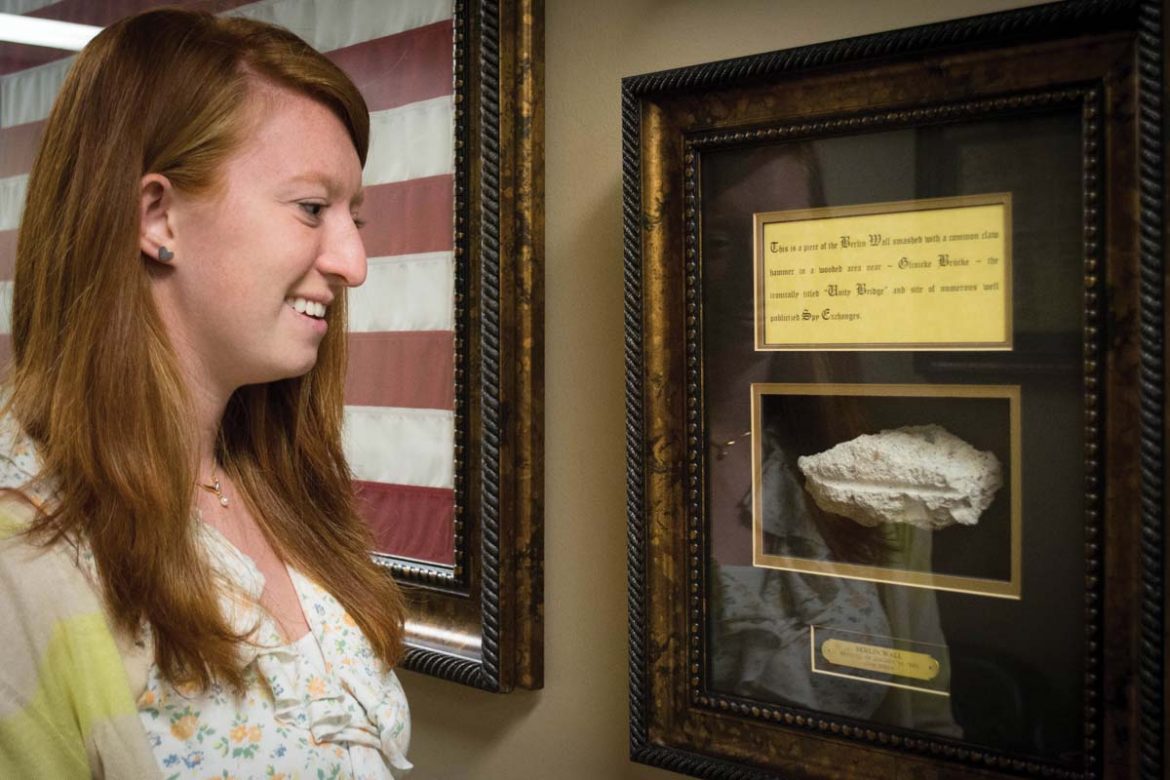“This is a piece of the Berlin Wall smashed by a common claw hammer in a wooded area near Glienicke Brucke, the ironically titled “Unity Bridge” and site of numerous well publicized spy exchanges.”
This quote inscribed upon a case containing a piece of the Berlin Wall hangs on the wall outside of the American Studies Institute office on the second floor of the David B. Burks American Heritage Building. The piece was donated on Jan. 1, 1990, by John Ogren, a student leader on campus and officer in the American Studies Distinguished Student Program at the time.
The Berlin Wall forcibly fell in 1989 and began the process of combining East Germany and West Germany. Many large pieces of the wall now reside in museums around the world while smaller pieces have been collected by individuals.
Dr. Bob Reely, associate executive director of the American Studies Institute, commented on how big of an event the fall of the Berlin Wall was.
“For that to ever happen, I don’t think any of us in my generation or older ever thought that would ever happen in our lifetime,” Reely said. “For the wall to come down, it was really a big deal.”
Former Harding president Dr. George S. Benson was in the forefront of the anti-communist movement in the South.
“Benson was definitely in the lead on that … his emphasis on capitalism and free enterprise, that was the pregenerator of the American Studies Program,” Reely said.
The story behind the Berlin Wall piece traces itself back to a time when Benson had his own radio program which, according to the ASI website, reached 25 million people a week.
Reely said that Harding and the American Studies Program came from the “heritage of Benson, who did movies with Ronald Reagan that were very anti-communist.”
With the threat of mutually assured destruction from the Cold War and the spread of communism becoming real, Benson took a lead role early in the fight for the spread of free-market thought. Benson, who took a mission trip to China, witnessed first hand the death of Christians under communist rule and warned Americans about the dangers of communism.
Putting not only German history on display, the Berlin Wall piece provides a deeper connection to Harding and its history.
